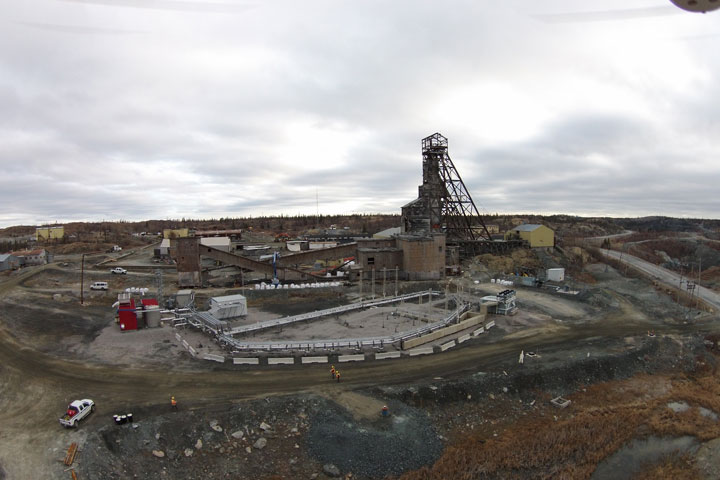TORONTO – When you think of arsenic, what likely comes to mind is one word: poison.

Most arsenic is natural, found throughout our environment in Earth’s crust and even in small quantities in soil, water and air. It doesn’t harm us — in small amounts.
But arsenic trioxide is something completely different. The inorganic compound is a by-product of mining operations, such as that of the Giant Mine in Yellowknife.
READ MORE: Toxic dust buried under Yellowknife’s ‘Giant Mine’ to cost taxpayers $900M
A roasting process was used to extract the gold ore from the rock, creating the by-product aresenic trioxide.
The highly toxic substance was then collected and pumped underground into 14 of 15 underground chambers. Approximately 237,000 tonnes of it was stored at Giant Mine.
According to the Centers for Disease Control in Atlanta, Georgia, it doesn’t take a lot of arsenic trioxide to cause some serious health effects. “Small amounts of arsenic trioxide can lead to multiple organ damage and death,” its online description reads.
Some signs and symptoms of arsenic trioxide poisoning include nausea, vomiting, diarrhea, gastrointestinal hemorrhage, cerebral edema, tachycardia, dysrhythmias, and hypovolemic shock.
READ MORE: Is there a contaminated site near you?
Those who have been exposed may not show all of the symptoms and even if they do, these could be delayed.
Though a poison, arsenic trioxide is also used in cancer treatments.
According to the American Cancer Society, arsenic trioxide is used to treat leukemia. It’s not understood exactly how it works, but it causes changes in cancer cells that eventually kills them off.
Its use in cancer treatments isn’t anything new: it is believed that a solution of arsenic trioxide was used as far back as 1878.
- Wegovy now in Canada: Who should (and shouldn’t) use the weight-loss drug
- Abortion is set to be a key U.S. election issue. Which side has momentum?
- N.B. woman must move to Toronto for life-saving lung transplant. She can’t afford to go
- B.C. man losing vision needs to find home for treasured book collection




Comments